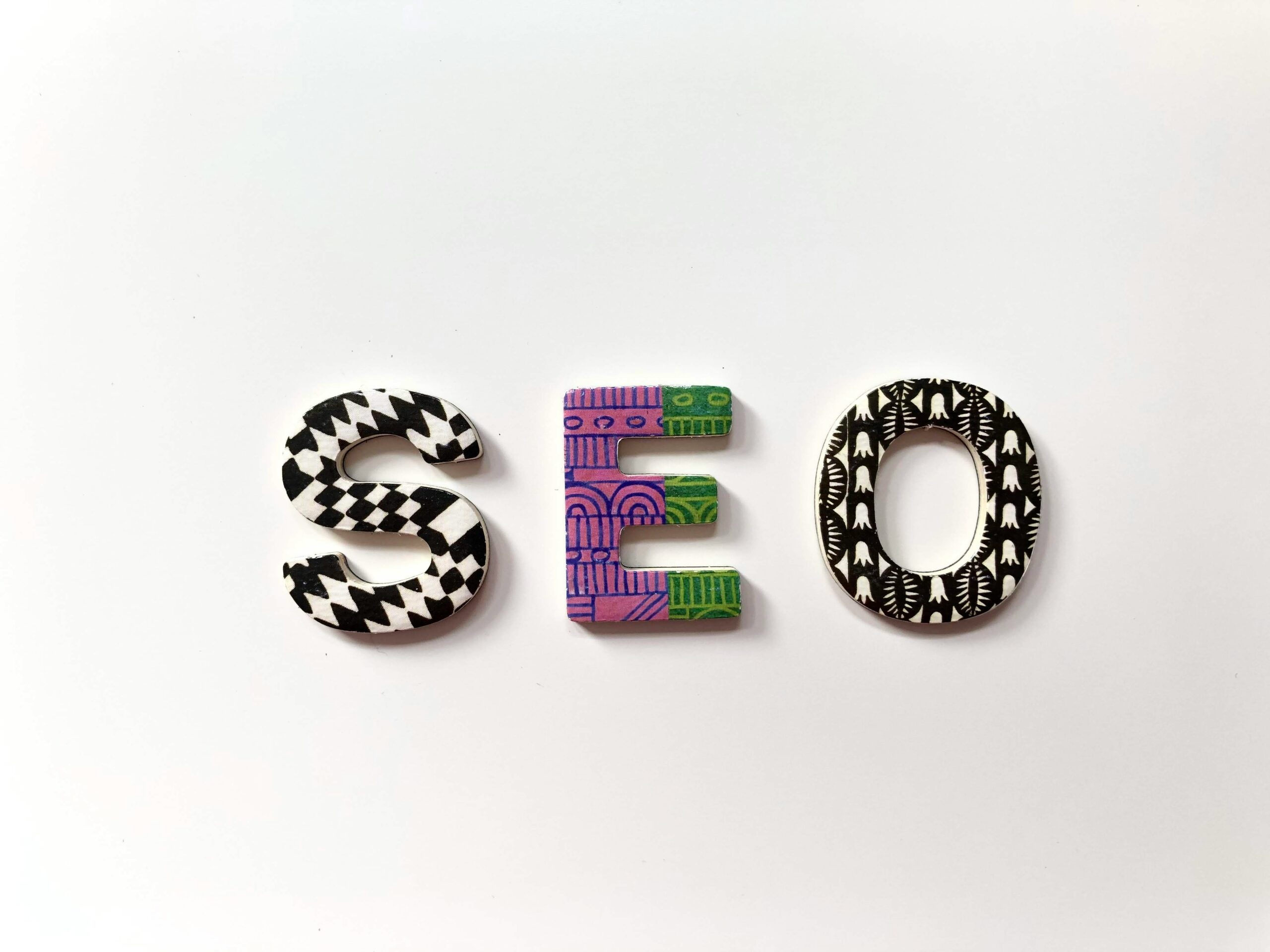The digital landscape is evolving, and businesses seeking improved online visibility and lead generation must embrace SEO content development that resonates with both search engines and users. This guide outlines strategies, advanced keyword tactics, on-page optimization techniques, and content amplification methods to create material that ranks and converts. Deep audience understanding, semantic techniques, and precise technical execution can drive impressive returns on investment. By following these principles, companies can fully harness SEO content development to achieve lasting online success.
Key Takeaways:
SEO content development thrives on deep audience understanding, semantic optimization, and user-first design to drive visibility and engagement.
Advanced keyword strategies like clustering, long-tail targeting, and intent mapping help content rank while addressing real user queries.
On-page excellence—through schema markup, Core Web Vitals, internal linking, and mobile-first design—enhances SEO performance and user experience.
Amplification tactics such as content repurposing, influencer partnerships, and backlink outreach maximize reach and long-term ROI.
Success lies in continuous content audits, A/B testing, and analytics-driven refinement to ensure lasting impact and conversion growth.
Revealing Core Strategies for SEO Focused Content Development Success

Understanding your target audience is the first step to effective SEO content. By analyzing demographics, behaviors, and user intent, companies can craft content that ranks well and directly answers user queries. This deep insight lays the foundation for every subsequent SEO tactic.
The Underrated Power of Deep Audience Understanding in SEO Content Creation
Deep audience understanding shapes topics, tone, and information delivery. By identifying specific audience queries and using market research tools for insights on characteristics and preferences, companies can develop focused guides (e.g., on “content optimization for lead generation”) that improve engagement and establish authority.
Beyond Keywords: Semantic SEO Focused Content Development Approaches
Semantic SEO uses natural language, related terms, and synonyms instead of relying solely on exact-match keywords. This method allows content to answer queries more comprehensively while appealing to both search engines and human readers.
Establishing Authority Through Comprehensive SEO Content Creation
Authority is built through detailed research, expert insights, and regular updates. Content that incorporates diverse formats, such as case studies, expert interviews, and detailed guides, reinforces credibility. For instance, updating content with current statistics (e.g., a noted increase in organic traffic when strategies are refined) further supports trust and authority.
How User Experience Shapes SEO Focused Content Development Wins
User experience (UX) is critical for SEO rankings. Content presented with clear structure, fast loading speed, and mobile responsiveness keeps users engaged. When sections answer questions right away (for example, noting that pages loading within 2 seconds lower bounce rates), it boosts both user satisfaction and search engine relevance.
The True Impact of E-E-A-T on Your SEO Focused Content
Experience, Expertise, Authority, and Trust (E-E-A-T) are pivotal for ranking. Content that demonstrates these qualities through expert opinions, cited sources, and thorough data builds reader trust, encouraging shares and conversions. A rigorous review process and incorporation of author bios and citations help reinforce these pillars.
Advanced Keyword Tactics for Superior SEO Content Development
Although keywords remain important, advanced tactics require deeper analysis of search intent and competitor strategies to create content that spans wide semantic fields.
Finding Untapped Keyword Opportunities for SEO Content Creation
Effective SEO begins with identifying lesser-known keywords. Tools like SEMrush and Google Trends help uncover long-tail keyword variations (for instance, “SEO content planning for digital agencies”) that drive qualified traffic. Continuous keyword research ensures content topics stay current and competitive.
Strategic Keyword Clustering in SEO Focused Content Development
Grouping related keywords into clusters creates topic-rich content that covers various search queries. Clustering around a central theme—for example, “content marketing” with subtopics like “editorial calendar planning”—helps produce comprehensive, self-contained articles that perform better in search rankings.
Decoding Search Intent for Precise Keyword Application
Understanding whether users seek information, navigation, or transactions is vital for keyword application. Content that aligns its keywords with user intent addresses problems or purchase decisions directly, ensuring each page serves a clear purpose in the buyer journey.
Competitor Keyword Analysis: Uncovering Their SEO Content Development Secrets
Analyzing competitor keywords reveals gaps and opportunities. Tools such as Ahrefs and Moz allow marketers to compare strategies and identify missed opportunities, ensuring that new content fills these gaps and stays ahead of market trends.
Utilizing Question-Based Keywords in Your SEO Focused Content
Question-based keywords (those starting with “how,” “what,” “why,” or “when”) capture voice search and long-tail queries effectively. Incorporating these questions in headlines and subheadings helps address common concerns in a direct manner, enhancing both relevance and conversion potential.
Crafting SEO Focused Content That Ranks and Converts

Creating successful SEO content requires persuasive copy, clear structure, and engaging storytelling that resonates with the target audience.
Writing Persuasive Copy for SEO Focused Content Development
Persuasive copy directly addresses user needs and motivates action. Using strong calls-to-action and benefit-focused language (e.g., “Increase your organic traffic by 30% in 6 months”) immediately captures reader attention, ensuring clarity and a consistent tone throughout.
Structuring Content for Maximum Engagement and SEO Benefit
A clear content structure, with headings, bullet points, and short paragraphs, improves reader comprehension and dwell time. Features such as white space, multimedia elements, and internal links guide users through related topics, reducing bounce rates and supporting higher search engine rankings.
The Art of Compelling Storytelling in SEO Content Creation
Effective storytelling transforms data into engaging narratives. Integrating user experiences with practical advice and projections creates an emotional connection that bolsters retention. For example, a case study demonstrating improved conversions through a refined strategy illustrates both success and trustworthiness.
Creating Content That Naturally Attracts Backlinks
Content that is unique, research-driven, and shareable naturally earns backlinks. Incorporating informative infographics and comprehensive guides adds value, encouraging industry experts to reference the material. This organic link building further boosts domain authority and search rankings.
Advanced Techniques for Internal Linking in Seo Focused Content Development
Internal linking strategically connects related articles and important resources to enhance navigation and topic relevance. By using clear anchor texts, websites build a network that complements technical SEO, increases session duration, and consolidates page authority.
Mastering on-Page Elements for Peak SEO Content Development

On-page optimization ensures that all page elements—from metadata to images—are aligned with search engine guidelines and offer value to the reader.
Optimizing Beyond the Basics: Schema Markup for Seo Content
Schema markup provides structured, machine-readable data that enhances search result displays. Using standardized schemas (FAQ, How-To, Article) can enrich snippets with star ratings and breadcrumbs, driving higher click-through rates and improved search visibility.
The Secret to Image and Video SEO in Content Creation
Optimizing visual elements by using descriptive alt attributes, filenames, and structured data contributes significantly to SEO. Compressing images for faster loading, including captions, and providing transcripts for videos ensure a streamlined multimedia experience that satisfies both users and search engines.
Mobile-First Indexing and Its Implications for Seo Focused Content
Given that mobile devices account for a large share of web traffic, mobile-first indexing is essential. Responsive design, fast load times, and intuitive navigation ensure that content is accessible across all devices, directly impacting search rankings and overall user satisfaction.
Core Web Vitals: Optimizing for Speed and User Satisfaction
Metrics such as load speed, interactivity, and visual stability (Core Web Vitals) directly influence search rankings. Optimizing these factors through methods like image optimization and script modification ensures a seamless user experience and contributes to higher organic performance.
Key Technical SEO Aspects for Content Visibility
Technical SEO involves optimizing URL structures, meta tags, and correcting broken links, as well as implementing XML sitemaps and secure HTTPS protocols. A well-optimized technical foundation makes content more discoverable and resilient against algorithm changes, thereby supporting long-term organic traffic growth.
Amplification Secrets for Your SEO Focused Content Development
Creating high-quality content is only half the battle; its success depends on proactive amplification through diverse promotion strategies.
Building a Powerful Content Promotion Engine
A strong content promotion engine leverages social media, content syndication, email marketing, and influencer partnerships. Regularly scheduling posts and automating social sharing keep the content visible and continuously attract high-quality backlinks and traffic.
Strategic Outreach for High-Quality Backlinks to Your SEO Content
Proactive outreach through personalized emails, guest blogging, and research collaborations targets reputable sites for high-quality backlinks. These strategic efforts not only boost search rankings but also pave the way for future collaborative opportunities.
Repurposing SEO Focused Content for Omnichannel Presence
Transforming a guide into videos, podcasts, infographics, or social media posts extends its reach and engages different audience segments. An omnichannel approach amplifies content impact and increases brand exposure across various platforms.
Community Engagement as a SEO Content Development Multiplier
Direct interaction with the community—via comments, webinars, or social media groups—builds organic link networks and strengthens content credibility. Active engagement often results in user-generated content and testimonials that further authenticate the brand.
Influencer Collaboration to Boost Your SEO Content Creation
Partnering with trusted influencers in related niches amplifies content visibility and instills confidence in target audiences. Influencer collaborations can also result in valuable backlinks and social shares that reinforce overall SEO performance.
Measuring True Success in SEO Focused Content Development

Beyond traditional traffic metrics, true success in SEO content is measured by meaningful performance indicators and continuous improvement.
Moving Beyond Traffic: Tracking Meaningful Content KPIs
Tracking engagement metrics like conversion rate, dwell time, and bounce rate provides deeper insights into content performance. Aligning these KPIs with business goals using analytics platforms (Google Analytics, Adobe Analytics) facilitates ongoing strategy adjustments and better ROI measurement.
Advanced Analytics for Uncovering Seo Content Development Insights
Leveraging data from search engines, heat maps, and session recordings helps pinpoint underperforming pages and optimize navigation. Detailed analysis of click-through rates and user interactions supports data-driven refinements that enhance overall engagement.
Content Audits That Reveal Hidden Optimization Opportunities
Regular content audits identify outdated information, redundant pages, and keyword misalignments. Tools such as Screaming Frog and DeepCrawl help maintain a fresh, fully optimized website that adheres to current SEO standards.
A/B Testing Your Seo Focused Content for Continuous Improvement
A/B testing headlines, call-to-action buttons, and page layouts allows businesses to determine which variations drive higher engagement and conversion rates. Iterative testing informs editorial decisions and supports continuous content improvement.
Future-Proofing Your Seo Content Development Strategy
Staying ahead of industry trends and algorithm changes through ongoing training, conferences, and experimenting with new formats (e.g., interactive experiences, voice search optimization) safeguards content relevance and competitiveness in an ever-changing digital landscape.
SEO On-Page Elements Comparison
Before diving into further amplification, consider this table summarizing key on-page elements and their benefits:
This table serves as a quick reference to help prioritize technical improvements that yield the highest ROI.
Following these comparisons, integrating detailed analysis and ongoing data monitoring will further optimize your SEO initiatives.
Frequently Asked Questions
Q: What role does deep audience understanding play in SEO content development?
A: It ensures that content is tailored to the target market’s needs and search behaviors, driving higher engagement and more effective responses.
Q: How can semantic SEO improve content relevance?
A: By using natural language and contextually related terms, semantic SEO produces rich, meaningful content that better aligns with user queries.
Q: Why is schema markup important for SEO?
A: Schema markup structures data so that search engines can display rich snippets, leading to higher click-through rates and improved visibility.
Q: What are Core Web Vitals and how do they impact SEO?
A: They are metrics that measure user experience elements like loading speed and interactivity, directly affecting search rankings and satisfaction.
Q: How does effective internal linking benefit SEO content?
A: It improves navigation, increases page authority, and facilitates a better user journey, enhancing overall organic performance.
Q: What strategies can be used for effective content amplification?
A: Strategies include building a promotion engine, engaging in strategic outreach for high-quality backlinks, repurposing content for multiple channels, and leveraging influencer collaborations.
Q: Why are content audits essential in SEO?
A: They help identify outdated or underperforming content and uncover optimization opportunities, ensuring the strategy remains current with search engine requirements.
Q: How does A/B testing contribute to SEO success?
A: It allows businesses to refine headlines, CTAs, and layouts based on performance data, leading to improved engagement and higher conversion rates.
Final Thoughts
Successful SEO content development requires a multifaceted approach that blends audience insight, semantic precision, and rigorous technical optimization. By continuously refining strategies—from advanced keyword research to intuitive internal linking—and combining detailed measurement with effective amplification, companies convert raw traffic into tangible business growth. With a balanced mix of creativity, technical expertise, and data-driven improvements, businesses can create content that not only ranks well but also engages readers and drives substantial leads and revenue.
